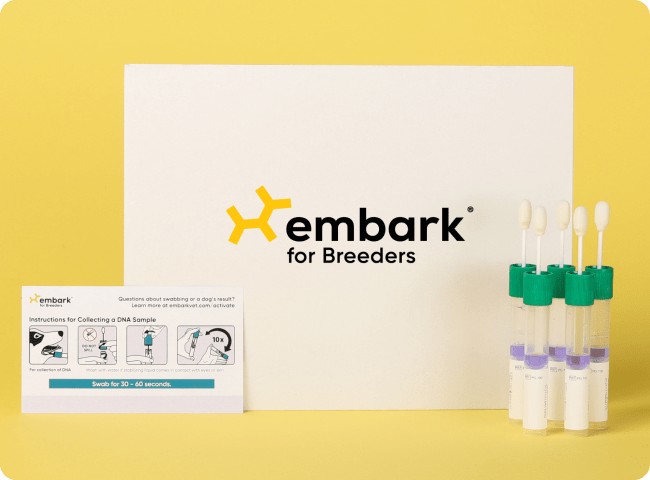Hereditary Cataracts
Cataracts are the result of a progressive disease of the lens. The lens is normally a transparent structure of precisely organized fibers that lives in the pupil and focuses light. Cataracts cause the lens fibers to become disordered and turns the lens into a milky blue color. The lens is no longer transparent, light fails to reach the retina, and blindness is the end result. With this genetic mutation, dogs can develop cataracts at only a few weeks to months of age.
-
Signs and symptoms
Affected dogs will first show a cloudy haze in their pupil that becomes progressively more milky blue to crystalline in appearance. Vision will become progressively worse, and dogs may start bumping into furniture, be more hesitant on steps, and run into walls or doorways.
While cataracts are typically a disease of the aged dog and can be associated with other eye diseases (these would be termed secondary cataracts), mutations in the HSF4 gene cause cataracts to form at an accelerated rate in comparatively young dogs (approximately 2-7 years of age). -
Diagnosis
Veterinarians will examine your dog’s eyes, and may use a light or lens to assist in the diagnosis. Please note that there are other ocular diseases that are commonly mistaken for cataracts so be sure to have your dog evaluated by a veterinarian.
-
Treatment
Surgical correction by a veterinary ophthalmologist is currently the only treatment available to restore your dog’s vision. The other alternative is careful monitoring and lifestyle changes to make your dog’s blindness more manageable.
-
What to do if your dog is at risk
Actions
- The best care you can provide your dog is seeking the expert opinion of your veterinarian for an accurate diagnosis and determining whether or not a specialty consult for surgery is required.
-
Genetic Information
This mutation was first identified in the Australian Shepherd.
Breed will determine whether or not the mutation of HSF4 has incomplete or complete penetrance. Australian Shepherds with one or two copies of the mutation may or may not develop cataracts as other genetic and environmental factors play a role in contributing to the disease. Please remember that there are other genetic and environmental causes of cataracts, and your dog may develop cataracts even with two normal copies of the HSF4 gene.
Gene names:
HSF4 ‐ chr
Inheritance type:
dominant
Citations:
-
Breeds affected
This health condition affects the following breeds
Learn about your dog’s unique genetic health
Dog owners
Breed identification, health and trait insights, personalized care recommendations, and the world’s first canine relative finder—all in one leading dog DNA test.
Learn about the report for dog ownersShop the test
Breeding programs
Embark’s test for breeding programs is one comprehensive DNA test designed with your needs in mind.
Learn about the report for breedersShop the test



